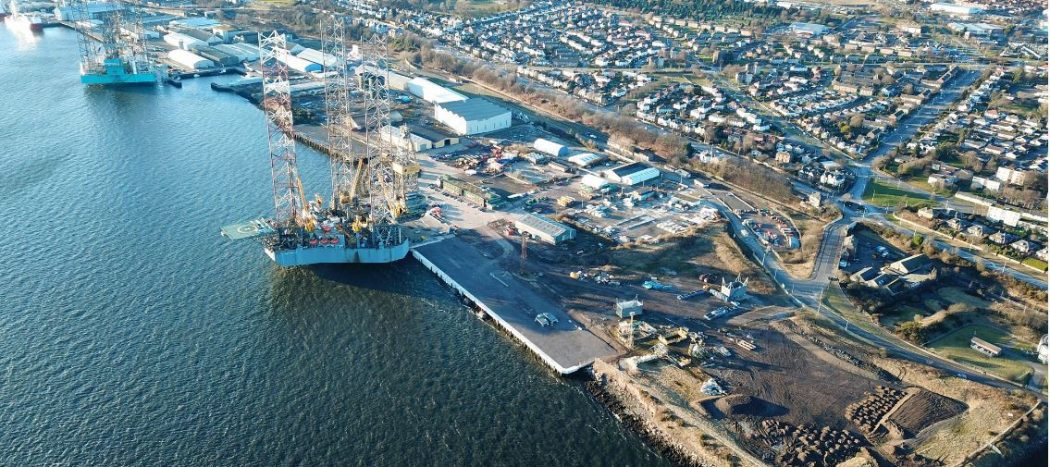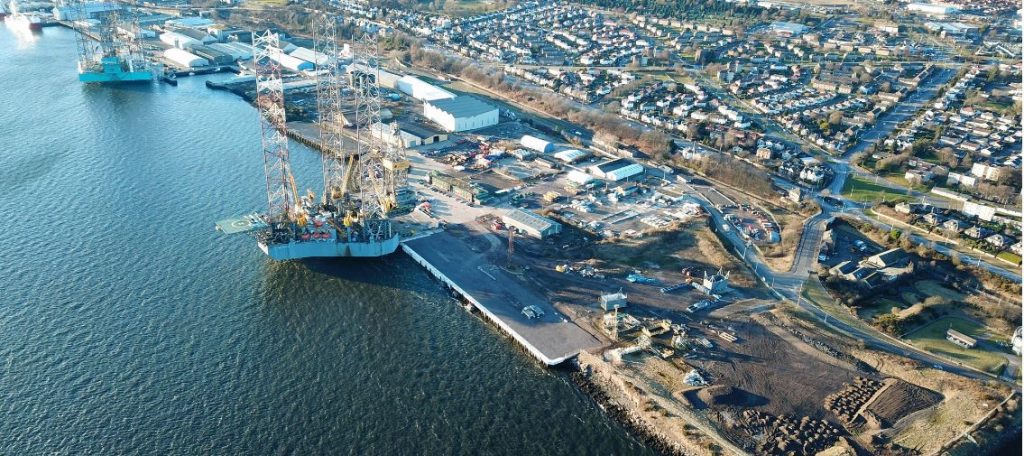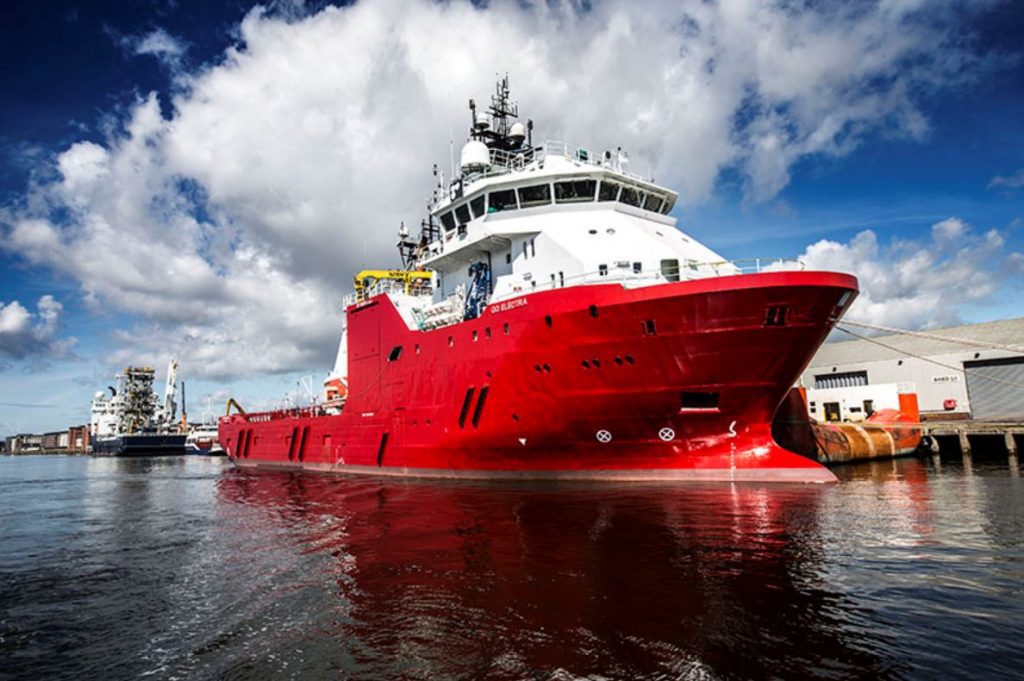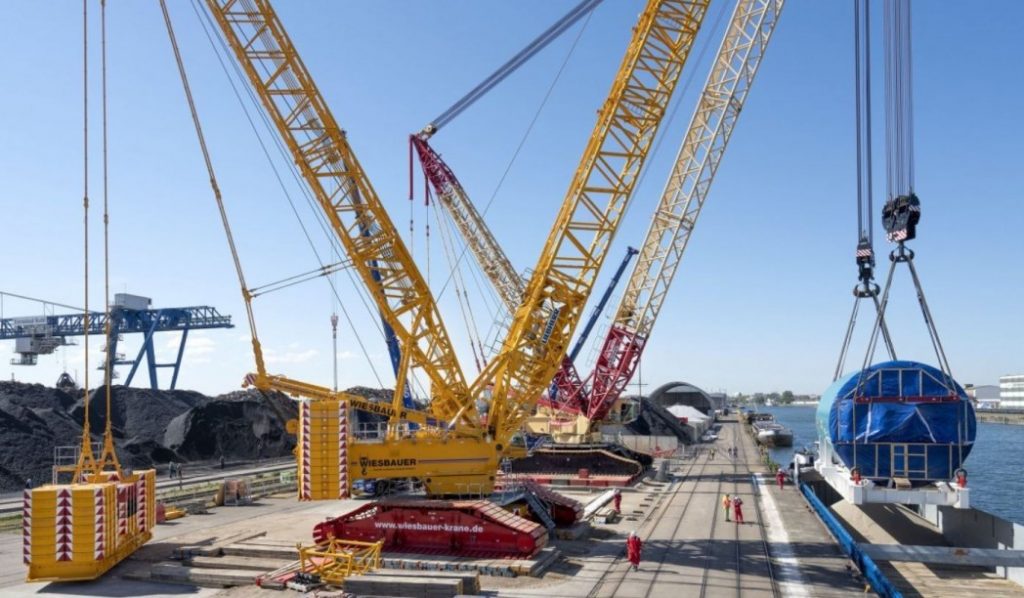
Multi-Million Pounds Dundee(L) For HBPW
22/09/2020 - posted in Civils, HBPW News, Marine, Value EngineeringHBPW’s ‘value engineering’ credentials have played their part in saving millions of pounds for a Scottish marine project central to the over-arching £1billion scheme to transform Dundee City Waterfront.

The main project, which started in 2001 with a projected finish date of 2031, encompasses 240 hectares of development land stretching 8km alongside the River Tay. The area, which is divided into five focussed zones, also includes Dundee Port.
Managing Partner, Paul Withers, takes up the story.
He said: “We are working with Graham Construction on a series of focussed schemes that form part of the Port of Dundee’s ‘Dundee East Re-development Project’
“Providing designs and drawings for both the land side and marine works, these individual schemes will see four key outcomes:
- The demolition and replacement of Caledon East Wharf, which was built in 1945
- Upgrading of load capacity to the existing Prince Charles Wharf
- Upgrading of the Prince Charles Wharf Extension anchor wall.
- Construction of unmetalled hard standings capable of supporting huge crawler cranes.
“Overall, they represent a £25m investment which, by any normal standard, would be pretty hefty, however, when set in the context of the wider 30-year scheme, it appears as a drop in the nearby ocean!”
The new Caledon East Replacement Wharf, which will be positioned to the east of the old structure and to the west of the existing Prince Charles Wharf, will provide a 170m berthing face complete with a 28.5 wide suspended reinforced concrete deck supported by 150 huge 914mm diameter tubular steel piles.
“These will be driven to refusal on to the rockhead below the River Tay bed,” said Paul, “providing a 35 tonnes per m2 load bearing capacity to the central 50m of the wharf, which is likely to host some of the largest crawler cranes in the world.”
The new facility will be used by roll on roll vessels supporting the region’s wind farm technology sector.
Meanwhile Prince Charles Wharf, which is being retained and extended, is also having its load capacity uprated.

“We have strong value engineering credentials at HBPW,” added Paul, “and we concluded that the existing structure was sufficient enough to support the increased load requirements.
“This may not seem like anything special until you realise that it meant the client was able to avoid the huge expense of a reinforced concrete overlay which was proposed as part of the original exemplar designs issued with the design and contract tender. This conclusion from detailed assessment and use of assessment codes of practice, saved the client millions of pounds!”
HBPW is also designing the strengthening works to the anchor wall of the Prince Charles Wharf Extension to facilitate increased ground loading to the rear of the extension.
“On the ‘land’ side the construction of unmetalled hard standings will support huge crawler cranes including the likes of the Liebheer L11350, one of the largest in the world, again, for use in the wind turbine sector.
“A significant proportion of the site is underlain by soft clay, which provides considerable challenges to designing a satisfactory surface for cranes of this size.
“However, overall, this is an amazing project which we are delighted to be working on with Graham Construction, and another example of a large scheme where we have been able to save a considerable sum thanks to our strong value engineering pedigree.”

The Port of Dundee is the most northerly port owned by Forth Ports and is one of the largest economic generators in the City of Dundee. It is Scotland’s main agricultural hub with over 250,000 tonnes of agricultural products moving through the port annually.
The port has also been identified as one of Scotland’s top locations for renewable manufacturing by Scottish Enterprise under the National Renewables Infrastructure Plan.
